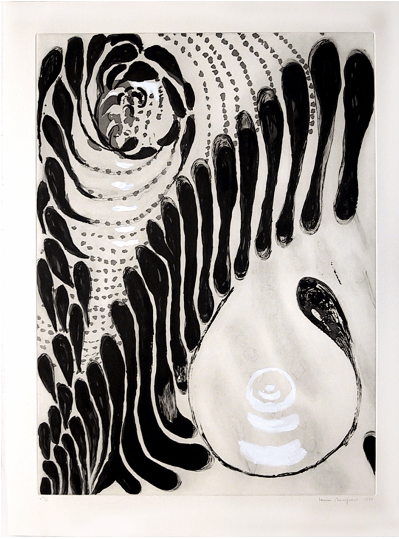Particles blasting from a supermassive black holejet appear to be The Never Ending Love Storytraveling at nearly the speed of light — much faster than scientists had previously clocked them, according to new research.
While most observations of black holes in spaceare with radio telescopes, a research team used NASA's Chandra X-ray Observatory to study their jets in a new light — literally. What they found with the X-ray telescope was surprising.
"We've shown a new approach to studying jets, and I think there's a lot of interesting work to be done," said David Bogensberger, lead author of the study, in a statement.
 In a composite image of the supermassive black hole at the center of the Centaurus A galaxy, jets are seen blasting from the accretion disk in opposite directions. Credit: ESO / WFI / MPIfR / ESO / APEX / A.Weiss et al. / NASA / CXC / CfA /R.Kraft et al.
In a composite image of the supermassive black hole at the center of the Centaurus A galaxy, jets are seen blasting from the accretion disk in opposite directions. Credit: ESO / WFI / MPIfR / ESO / APEX / A.Weiss et al. / NASA / CXC / CfA /R.Kraft et al. Black holes were little more than a theory 50 years ago— a kooky mathematical solution to a physics problem — and even astronomers at the top of their field weren't entirely convinced they existed.
Today, not only are supermassive black holes accepted science, they're getting their pictures takenby a collection of enormous, synced-up radio dishes on Earth. Supermassive black holes, millions to billions of times more massive than the sun, are thought to lurk at the center of virtually all large galaxies.
What we know is this: Falling into a black hole is an automatic death sentence. Any cosmic stuff that wanders too close reaches a point of no return. But scientists have observed something weird at the edge of black holes' accretion disks, the ring of rapidly spinning material around the hole, like the swirl of water around a bathtub drain: A tiny amount of that stuff can suddenly get rerouted.
When that happens, high-energy particles can get flung outward as a pair of jets, blasting in opposite directions, though astronomers haven't figured out exactly how they work. Jets give out prominent radio emissions, but have also been observed to be surprisingly bright in X-rays, too.
 NASA's Chandra X-ray Observatory spacecraft launched in 1999. Credit: NASA's Marshall Space Flight Center illustration
NASA's Chandra X-ray Observatory spacecraft launched in 1999. Credit: NASA's Marshall Space Flight Center illustration So Bogensberger, a postdoctoral fellow at the University of Michigan, decided to look at the black hole at the center of Centaurus A, one of the brightest galaxies in the sky, about 12 million light-years from Earth, in X-rays. For reference, one light-year is nearly 6 trillion miles.
Using data already captured by the space observatory between 2000 and 2022, Bogensberger developed a computer algorithm to track bright lumps within the jets that astronomers call knots. Following knots during a set timeframe is a way to measure the speed.
After tracking one knot in particular, the team found it traveling at least 94 percent the speed of light. That was significantly faster than what scientists had seen in radio waves, with a knot from the same black hole jet, moving at 80 percent the speed of light. The paperhas been published in The Astrophysical Journal.
Not only did the team discover faster clumps in the X-ray band, but the data also showed that the fastest knots weren't the ones closest to the black hole, as was seen in radio waves. Instead, the fastest knots were those around the mid-region of the jets.
What does all of that mean? The answer is a big shrug emoji right now, but Bogensberger intends to use his method to collect more data observing the jets of other supermassive black holes.
"A key to understanding what’s going on in the jet could be understanding how different wavelength bands trace different parts of the environment," he said. "Now we have that possibility."
Topics NASA
 AC Milan vs. Feyenoord 2025 livestream: Watch Champions League for free
AC Milan vs. Feyenoord 2025 livestream: Watch Champions League for free
 CivilWarLand in Bad Decline: Preface by George Saunders
CivilWarLand in Bad Decline: Preface by George Saunders
 Trump's 'spiritual adviser' goes viral in Twitter clip, prompts remixes
Trump's 'spiritual adviser' goes viral in Twitter clip, prompts remixes
 Louise Bourgeois, Untitled, 1994 by The Paris Review
Louise Bourgeois, Untitled, 1994 by The Paris Review
 Lily Allen x Womanizer sex toy review: So, um, OK, wow!
Lily Allen x Womanizer sex toy review: So, um, OK, wow!
 Carol Summers, Untitled, 1967 by The Paris Review
Carol Summers, Untitled, 1967 by The Paris Review
 Wordle today: Here's the answer and hints for June 12
Wordle today: Here's the answer and hints for June 12
 Best free gift card deal: Get $10 Best Buy gift card with $100 Apple gift card
Best free gift card deal: Get $10 Best Buy gift card with $100 Apple gift card
 What We’re Loving: Ham Biscuits, Victoriana by Sadie Stein
What We’re Loving: Ham Biscuits, Victoriana by Sadie Stein
 Cibao FC vs. Guadalajara 2025 livestream: Watch Concacaf Champions Cup for free
Cibao FC vs. Guadalajara 2025 livestream: Watch Concacaf Champions Cup for free
 'Gleefreshing' is the opposite of doomscrolling
'Gleefreshing' is the opposite of doomscrolling
 'Gleefreshing' is the opposite of doomscrolling
'Gleefreshing' is the opposite of doomscrolling
 Parsing Middle Earth Contract, and Other News by Sadie Stein
Parsing Middle Earth Contract, and Other News by Sadie Stein
 Best MacBook deal: Save $200 on 2024 M3 MacBook Air
Best MacBook deal: Save $200 on 2024 M3 MacBook Air
 Louise Bourgeois, Untitled, 1994 by The Paris Review
Louise Bourgeois, Untitled, 1994 by The Paris Review
 For Reference by Sadie Stein
For Reference by Sadie Stein
 Writing in Jewish, and Other News by Sadie Stein
Writing in Jewish, and Other News by Sadie Stein
 Best free gift card deal: Get $10 Best Buy gift card with $100 Apple gift card
Best free gift card deal: Get $10 Best Buy gift card with $100 Apple gift card
 Reddit briefly went down. What we know as the blackout protest continues.
Reddit briefly went down. What we know as the blackout protest continues.
A new 'Justice League' trailer is right around the cornerOh hell yes: Tom Hardy has been spotted filming 'Peaky Blinders' Season 4Lindsay Lohan's prank show sounds terrifying in the best wayJ.K. Rowling tweets heartwarming message in the wake of the London terror attackThink your groceries are expensive? Japan has $27,000 melons.Earliest dinosaurs may have originally come from Britain, new study saysPeople are making fun of Airbnb's new Chinese nameThink your groceries are expensive? Japan has $27,000 melons.Joe Biden met a puppy named Biden and for a moment, the entire world stoppedIt's time to start thinking about cybersecurity for sharks. Yes, the fish.'Game of Thrones' script reveals the truth about Stannis Baratheon's fateFacebook expands Live Video to profiles on personal computersDrake has some new tattoos and, well, it's best if you just see for yourselfIndia has 100 Forbes list billionaires for the first timeNew shiny Pokémon have started appearing in 'Pokémon Go'Confirmed: Nintendo Switch JoyThat 'secret' female superhero film at Sony has finally been revealedIt only took us five minutes to find a big brand advertising on a hate group's YouTubeWhat's Apple's tax bill in New Zealand? Why it's zero, niet, nada.It only took us five minutes to find a big brand advertising on a hate group's YouTube At Miu Miu, in Paris by Sophie Kemp Stopping Dead from the Neck Up by Delmore Schwartz Making of a Poem: Farid Matuk on “Crease” by Farid Matuk On Sven Holm’s Novella of Nuclear Disaster by Jeff VanderMeer Paul Bowles in Tangier by Frederic Tuten How to Rizz (for the Lonely Weeb): Derpycon by Liby Hays What Lies Beyond the Red Earth? by Michael Salu Citroën Cactus by Holly Connolly Summer by Kate Zambreno A Sense of Agency: A Conversation with Lauren Oyler by Sheila Heti Two Strip Clubs, Paris and New Hampshire by Lisa Carver At the Britney Spears House Museum by Emmeline Clein Too Enjoyable to Be Literature by Helen Garner Making of a Poem: D. A. Powell on “As for What the Rain Can Do” by D. A. Powell Real Play by Devon Brody My Strawberry Plants: On Marcottage by Kate Briggs Dirty Brown Subaru Outback by Kelan Nee In the Beginning by J. D. Daniels Announcing Our Winter Issue by Emily Stokes With Melville in Pittsfield by J. D. Daniels
2.7436s , 10137.875 kb
Copyright © 2025 Powered by 【The Never Ending Love Story】,Miracle Information Network